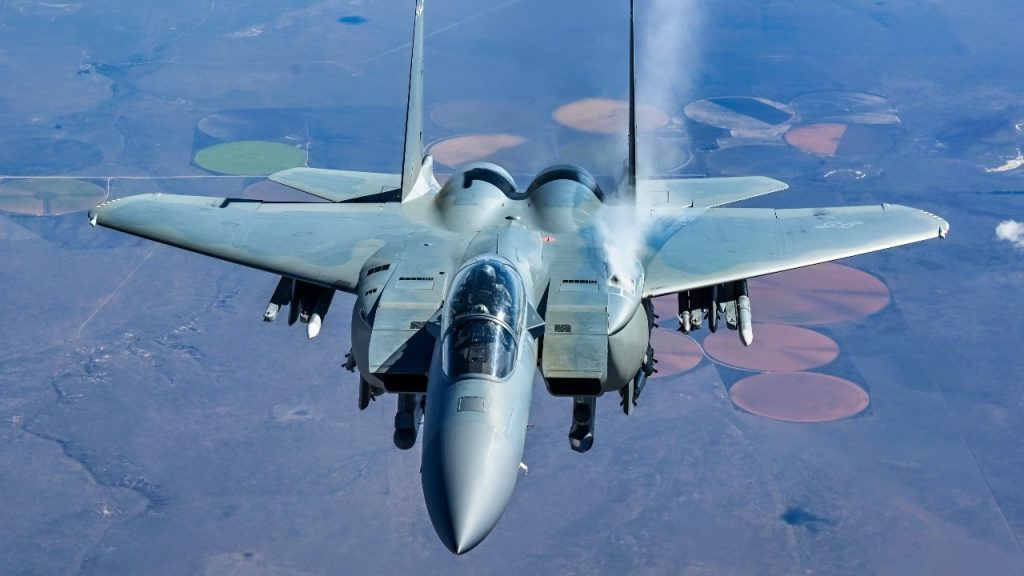
The F-15EX Eagle II is evidence of the US Air Force’s commitment to remaining at the forefront of the skies, as technology and threats alike continue to advance. This isn’t merely the latest iteration of the iconic F-15—it’s a giant step forward in performance, survivability, and mission adaptability.

The program was conceived out of necessity: the necessity to replace the aging F-15C/D fleet, which had served American air defense for decades. To wait for a purely fifth-generation fleet would have created perilous holes in coverage, so the Air Force looked to a quicker and more inexpensive solution—upgrading an already proven platform.

The outcome is a fighter that marries the tried-and-true reliability of the F-15 airframe with leading-edge systems, mission-capable from the beginning. Boeing characterizes the Eagle II as unmatchable in payload, range, and speed, and built to roll right into operations.

The most dramatic of the F-15EX’s upgrades is the replacement of its antiquated hydro-mechanical flight controls with state-of-the-art digital fly-by-wire. The new controls enhance safety and maneuverability, and make it easier to integrate future mission systems. In the cockpit, crews enjoy a state-of-the-art glass-cockpit display, improved avionics, and a next-generation radar system that significantly increases situational awareness.

The Eagle II can carry up to 12 air-to-air missiles—four more than older models—thanks to redesigned weapon stations that passed extensive live-fire testing with AIM-120 and AIM-9X missiles. Beyond that, the aircraft was built with the future in mind, designed to carry next-generation weapons, including hypersonic missiles. With twice the fuel and four times the munitions of earlier F-15s, it has the endurance to dominate in long, demanding missions.

Survivability is what the F-15EX was designed for. Its Eagle Passive/Active Warning and Survivability System, or EPAWSS, is a giant stride forward in electronic warfare capability. The system supplants decades of outmoded technology, allowing the plane to detect, jam, and counter modern air defenses independently. With EPAWSS on board, the Eagle II can penetrate deep into hostile environments and emerge victorious. In the words of Brig. Gen. Jason Voorheis, the plane is both a war-capable fighter and an effective deterrent.

The pace of development has been exceptionally rapid. The aircraft started testing nearly as soon as it arrived at Eglin Air Force Base, with additional tests at Nellis Air Force Base. All aspects—ranging from the new flight controls to its electronic warfare capabilities—were tested in conjunction with development. This integrated process accelerated delivery, enabling the Air Force to deploy the jet years ahead of typical timelines would have made possible.

The value of the F-15EX goes far beyond technology. It’s also a keystone in the modernization plan for the Air Force, helping to fill the void as legacy aircraft such as the A-10 take their retirement. Significantly, the Eagle II began its service in the Air National Guard, starting with the 142nd Wing based in Oregon. The choice bolstered homeland defense throughout the Pacific Northwest and across the continental US, enhancing readiness under both USNORTHCOM and NORAD.

To put the planes in these units is more than symbolic—it increases capability in a very tangible way. The F-15EX’s weapon payload and range complement fifth-generation fighters such as the F-22 Raptor and F-35 Lightning II, making a joint force more powerful and diversified.

In the future, the Eagle II will be the backbone of the U.S. tactical fighter force for decades. Its combination of affordability, firepower, and flexibility also makes it popular with partner air forces globally. With digital engineering designed into the aircraft, the plane is ready to accommodate new technologies and threats and change quickly and effectively.

The F-15EX Eagle II is more than a continuation of the F-15 tradition—it’s the basis on which American airpower will be built in the future. It represents the Air Force’s pledge to preserve air dominance, react quickly to new threats, and equip aviators with what they require to win any battle.
